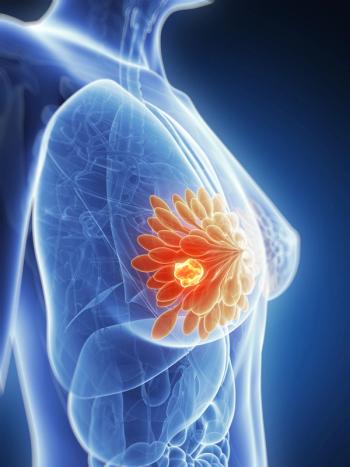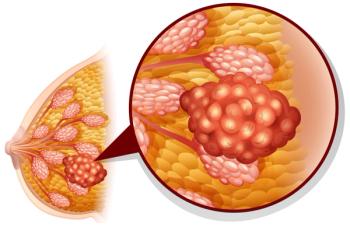
Oncology NEWS International
- Oncology NEWS International Vol 6 No 2
- Volume 6
- Issue 2
Paclitaxel Is Dose Escalated in Combination Regimen
DUARTE, Calif-Researchers at the City of Hope National Medical Center are in the process of updating their high-dose chemotherapy regimens for high-risk breast cancer patients to include paclitaxel (Taxol), George Somlo, MD, said in a poster presentation at the San Antonio Breast Cancer Symposium.
DUARTE, CalifResearchers at the City of Hope National Medical Centerare in the process of updating their high-dose chemotherapy regimens forhigh-risk breast cancer patients to include paclitaxel (Taxol), GeorgeSomlo, MD, said in a poster presentation at the San Antonio Breast CancerSymposium.
The researchers are conducting a phase I study to define the maximum-tolerateddose of a regimen of doxorubicin, cyclophosphamide, and paclitaxel withstem cell support. Paclitaxel has been shown to be more effective thanetoposide, which it replaces, Dr. Somlo said.
The regimen consists of 96 hours of continuous infusion doxorubicinat 165 mg/m², followed by cyclophosphamide at 100 mg/kg, followedby a 24-hour infusion of paclitaxel in a dose-escalating scheme.
The investigators are nearing the sixth dose level of paclitaxel. "Weare presently accruing patients at 525 mg/m² of Taxol as continuousinfusion," Dr. Somlo said in an interview.
So far, side effects have been tolerable. "The main side effectis mucositis, which is not more pronounced than what we have seen withour previous regimens," Dr. Somlo said, "although it does requireboth IV narcotics and nutritional support in the majority of patients."
To date, the researchers have enrolled 21 patients, and the study isongoing at an accrual rate of about three patients per month. Eligiblepatients are those with high-risk breast cancer (stage II with 10 or moreinvolved lymph nodes, or stage IIIA and IIIB) or those with responsivestage IV breast cancer.
"It is obviously too early to say anything about the results,"Dr. Somlo noted.
Articles in this issue
almost 29 years ago
NCI Launches Trial of High-Dose Chemo for Advanced Ovarian Canceralmost 29 years ago
'More May Be Less' in Metastatic Cervical Canceralmost 29 years ago
At 10 Years, DCIS Patients' Risk of Breast Cancer Death Is Very Lowalmost 29 years ago
Survey Finds 122 New Anti-HIV Medicines Currently Being Testedalmost 29 years ago
President Clinton Unveils National AIDS Policyalmost 29 years ago
Mammotomy May Reduce Biopsy Sampling ErrorsNewsletter
Stay up to date on recent advances in the multidisciplinary approach to cancer.





















































































